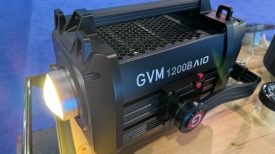By technical editor Matt Allard:
First Look At The Panasonic Varicam 35 and Varicam HS from Matthew Allard ACS on Vimeo.
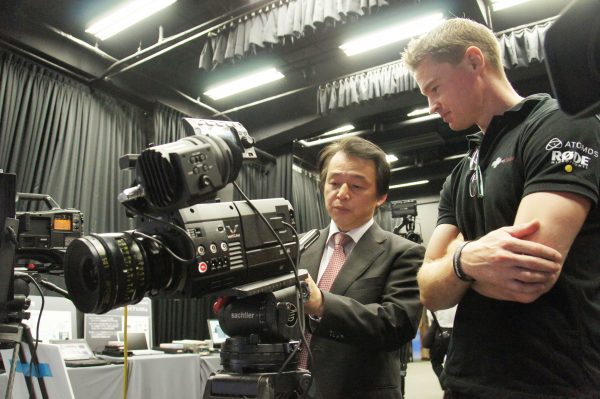
Today I was lucky enough to get my hands on working pre-production samples of the new Panasonic 4K Varicam 35 and Varicam HS. This is the first time in the world that they have been shown outside a glass case. While a lot of the features still weren’t enabled, I was able to use it and put them on my shoulder. Here are my initial impressions:
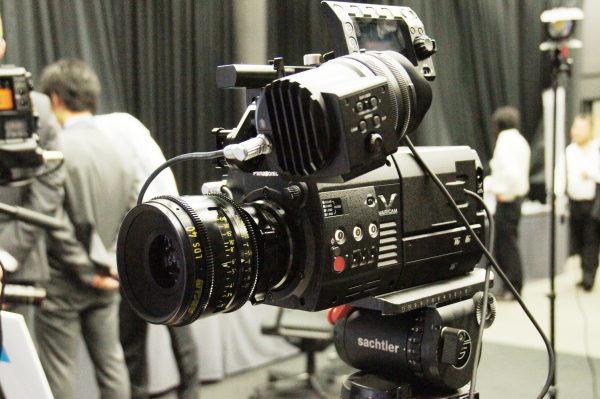
The Varicams don’t feel too heavy. I would say they are slightly heavier than a Sony F55 with a R5 recorder attached. The B4 mount Varicam HS version felt nicely balanced on the shoulder when coupled with a broadcast ENG lens. With a lot of the new breed of cameras, the lens feels too close to you when it’s on your shoulder, but the Panasonic felt like it was in the right spot. It really did remind me of using a traditional ENG camera in terms of its handling.
They felt very robust and well made but it did have a couple of large fans on the side that looked quite exposed to me. It will be interesting to see how weather resistant the final production version will be.
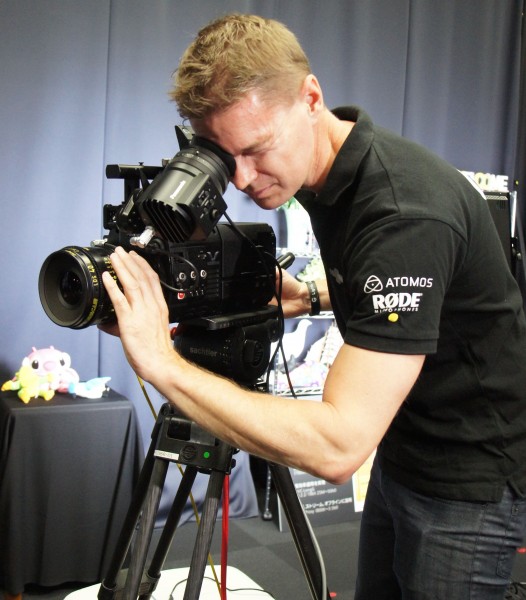
The EVF is also nicely placed and is easy to adjust to your eye. The functions were not activated on the prototype and I couldn’t get a good feel for the quality of the EVF screen. The shoulder mount it was sitting on was comfortable but did not adjust and the top handle and plate were not adjustable either. The top plate handle did feature a few mounting points for accessories, but there were no other points on the body of the camera that could be used.
The Varicam 35 was hooked up to a couple of 4K displays, so I was able to see the output of the camera. I couldn’t change the ISO to test lowlight performance, but the image looked very organic and had the nice colour reproduction that is inherent to most Panasonic cameras. The camera was set in the Vlog gamma curve and produced a very nice flat image. The control layout looks to be easy to use and the camera has a removable control panel which is a nice feature. Originally, we were told that it would be wi-fi, but that has now been changed to a tethered cable. The cable length is limited to 1 meter due to latency and optimal performance issues. It is handy, though, to be able to have it on the camera if you’re operating as a one man band, or have an AC move it to the other side or hold it as long as they stay close to the camera.
Panasonic rates the Varicam 35 at 800ISO, which is lower than say the Sony F55/55. They could not tell me how high the ISO would go up to, but on this pre-production model it went up to 12800ISO. Panasonic expects the low light performance to be very good and claim the camera has 14 stops of dynamic range. The camera is still very much in development and engineers are still working on optimising the sensor for best performance.
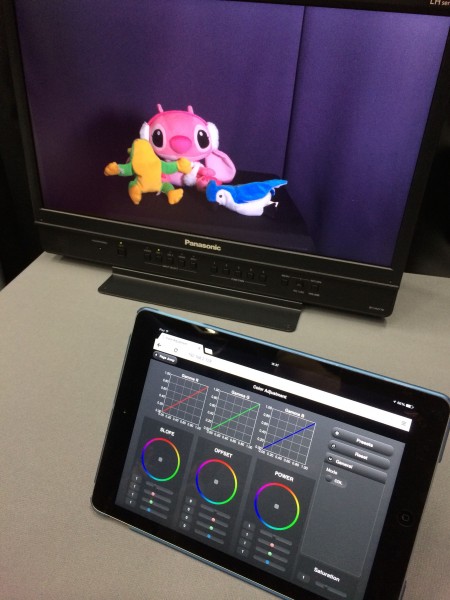
The on-set colour grading system I was shown is bound to be one of its biggest selling points. By using a simple web address and wi-fi you can access a ton of camera features, including the ability to do on-set colour correction. You can also burn in the colour changes you make on set and record them in HD while still recording the Log image to 4K. It also has the ability to output the colour corrections or LUT’s you create on all external outputs, or just the ones you select. All this could be controlled in a tablet or smartphone. For on-set monitoring and adjustment this is very handy indeed. As this camera is aimed at episodic TV and motion picture film, this feature set is what may ultimately help sell the Varicam 35 to studios and networks. The wi-fi interface also had the ability to adjust camera settings and play back clips. It also has a focus magnification function – you could zoom in and move around the camera image in real time to check critical focus, which is very important when shooting 4K.
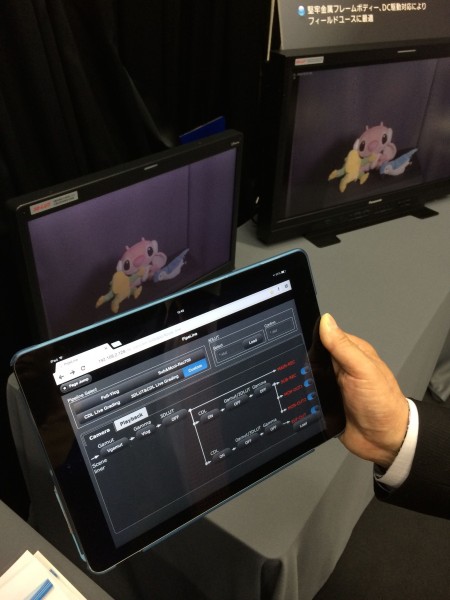
Outputting the 4K signal to another recorder can be done, but requires a device that can take 4 SDI inputs to do it. There is no HDMI output at all on the camera. I don’t really see why you would want to record the 4K externally when it can record 4K in 444 internally. If you want to record RAW then currently you will have to using the recorder being developed by Codex to do that – no other form of RAW recording is available. While the camera is modular and can be separated and used via an umbilical cord that will be up to 20 meters in length, there is no way of just using the Varicam 35 or Varicam HS without the Panasonic recorder.
The choice to have a separate 2/3” head (the VS) and a Super 35mm (Varicam 35) is to me a strange one. I would have preferred to see Panasonic do what Sony has done by making a 2k centre crop mode instead of you having to buy two separate heads. I don’t quite see the point in this day and age in buying a sole camera head that just uses a 2/3” sensor – but I guess final judgement will come after we see the quality of the image.
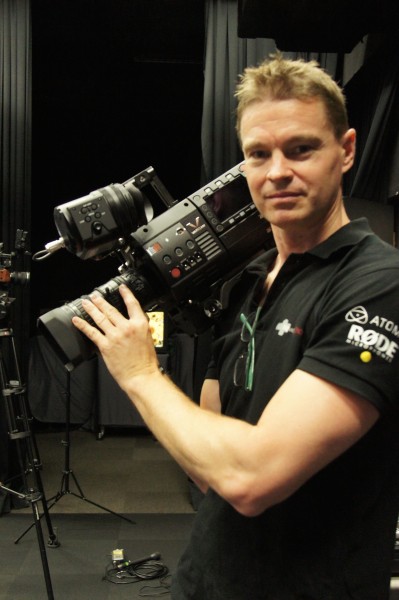
With a expected price at least in Japan of $60,000 US for the Varicam 35 head, recorder and EVF it is going to be interesting to see who is going to buy this camera. While it is aimed strictly at the higher end of the market, this camera is almost twice the price of a F55 and more than $10,000 dearer than the Arri Amira. At $60,000 for a camera that still needs an external recorder to be able to capture RAW, it really is going to have to appeal to those studios and shows that are already using the Arri Alexa and that is going to be a big ask. Only time will tell if the price will be justified.




